Review by Pete Vack
Scroll down for images
There are several things that amaze me about this book. One is how little I knew about that grand old French marque Hotchkiss, and another is how much author David Beare knows about everything. Perhaps only someone like Beare could so deftly merge the automotive side of Hotchkiss with the military, social and political history that accompanied the rise and fall of that marque. The author is equally at home discussing Jeeps, tractors, tanks, machine guns, aircraft and political parties all while informing us that the great automotive artist Alex Kow was schooled in the history of the Helvetic Confederation.
Hotchkiss in America
Hotchkiss was founded by Benjamin Hotchkiss, whose name went back to the Norman invasion as Hochekys, and who was the son of a tanner in Connecticut whose family had immigrated from England in the 1600s. Young Hotchkiss found tool making less odious and by 1855 had established a business making artillery pieces, ammunition and percussion fuses. The Civil War was only five years away and so went the good fortunes (and sometimes bad press post WWI) of the Hotchkiss company, who profited mightily from a multitude of wars until the end of WWII. It’s a tough job but someone has got to do it. Benjamin established a factory in France on the request of Napoleon III, quite coincidentally on the eve of the Franco-Prussian war of 1870.
From Swords to Plowshares
Since gun production required high quality machine tools and accurate machining, in the off years it made sense to manufacture automotive parts, and eventually Hotchkiss began producing their own line of automobiles, which commenced in 1903. Beare expertly weaves a narrative that throughout includes diverse elements as times and characters come to influence the direction of the company. Hotchkiss engineered conservative, upper middle class cars from 1903 to the mid-fifties; high quality, not very exciting and yet even at the worst of times after the depression, they managed to sell enough cars to keep that side of the company alive.
Hotchkiss will be remembered for its rather unique company badge, with two crossed cannons surrounded by a military belt topped by a flaming hand grenade. The Ferrarina was the only other car I can think of that also offered up a gun on its grille, albeit temporarily. While it all sounds fairly simple, the history of Hotchkiss is really much more complex and interesting than just the manufacture of a few high-end sedans might indicate.
Forging a Conservative Path forward
While automotive production commenced at the Saint Denis factory in Paris, the firm was being highly influenced by British managers and engineers, with a factory in Coventry to build Continental engines for William Morris in 1919. In an attempt to out Ford-Ford, Morris bought out suppliers and competitors, and the Coventry factory was folded into the growing Morris empire that would eventually be the BMC of the sixties. At Hotchkiss, Englishman Henry Ainsworth had taken control of the company. Although he presided over the glory years at Hotchkiss, Ainsworth was responsible for bringing in the Italian engineer Vincenzo Bertarione, then J. A. Grégoire, which caused endless problems.
During the 1920s, Hotchkiss produced the A.M., and later the A.M. 2. These were equipped with four cylinder side valve engines, with standard leaf spring suspension (and with the famous “Hotchkiss Drive” rear end that became standard practice throughout the industry). They were a ‘happy medium’ between the cyclecars like the Bedalia and larger, heavier cars like the Panhard.
Six Times Winner of the Monte
Under Bertarione, Hotchkiss created a line of reliable, if heavier, four and six cylinder cars with overhead valves, good performance and the cars achieved many rally victories in the 1930s. Hotchkiss, that brand we know little of, won the Monte Carlo Rally. Hotchkiss won the rally SIX times, in 1932, 1933, 1934, 1939, 1949 and 1950! Had it been an Alfa Romeo accumulating that record we surely would have known by means of a dozen books by now.
Compound Fractures
And in what might be considered an aside, Beare expounds upon one of the most enigmatic personalities, Jean-Albert Grégoire. For about twenty years, Grégoire was involved with Hotchkiss, for better and unfortunately, for worse. In 1936, looking for a small car, Hotchkiss purchased the ailing Amilcar, and from that came the Amilcar Compound courtesy of Grégoire. From the Compound to the last Grégoire sports car, Beare tells us how brilliant and yet difficult the man could be, and how his attitude created hard feelings and a lot of enemies.
Interesting Digressions
Beare is always intent upon detailing the context. His chapters are titled by years and eras rather than cars. This allows him to digress. The brilliant Grégoire built an electric car based on the Amilcar Compound for the French electrical company CGE-Tudor, but the car, also known by the same name, was only partially completed by Hotchkiss. Describing this permits Beare to segue into the haphazard effort of many French car makers (Beare lists 18) to create useful electric cars during WWII and details it out with diagrams, photos and descriptions, all very apt in this day and age. With car production looking bleak at the end of WWII, Hotchkiss got a contract to repair and maintain thousands of American Army Jeeps with Willys Overland, which later led to the production of Jeep vehicles in the 1960s.
Does one recall the Ferguson four-wheel drive Grand Prix car driven by Stirling Moss? Perhaps. But we didn’t know that in 1953 Hotchkiss had a deal going with Ferguson to produce tractors. Oh mundane vehicles, these machines that helped feed a starving world. Beare knows they are not mundane and takes a personal interest in the various Ferguson tractor deals made in the U.K. and Europe. Again a worthy digression.
Hotchkiss in America Redux
What began as an American company in Paris later supported by British interests oddly enough ended as a French company getting very involved in the maintenance, modification and even construction of that most American of American cars, the Jeep.
And if you have ever been to Lime Rock, you are probably aware of the Hotchkiss Prep School in very nearby Lakeville Connecticut. Back to Benjamin, who moved to Paris to run his new firm and left his wife Maria Bissell in the U.S., married a French woman, died at the even then early age of 54 and left a considerable fortune to his wife in the U.S., who in turn established the Hotchkiss School, preparing boys for Yale. Which may or may not bring us to the late Tony Carroll of the VSCCA, who was one of the few who owned and drove a Hotchkiss to Lime Rock, of course.
The Last Tango in Paris
In 1954 the struggling company still known as Delahaye merged with the equally struggling Hotchkiss and very soon it was over for both. As Hotchkiss danced with Delahaye the world changed and left them both trying to figure out what to do. Wars in Viet Nam and Algeria were ending and Renault clearly had the upper hand in the automobile industry. Gregoire went his own way, not successfully, as was his style.
No book about Panhard or Hotchkiss would be complete without the illustrations of Alex Kow. We previously reported on Kow’s Panhard ads, and here Beare shows us Kow’s work with Hotchkiss. Kow also actually helped design bodies for Hotchkiss, and his automotive art is simple yet beautiful and compelling.
A. Kow, 40 ans de Creation Publicitaire Automobile” published by Editions de l’Automobiliste in January 1978
Summary
David Beare has once again created a history that offers a great deal of additional information by firmly placing the subject in the context of the social, political, economic and technical times. No matter how well read one might be, one will probably learn something new while achieving a better understanding of the elements that fashioned the main subject. In addition, there are very few books on Hotchkiss automobiles, particularly in English, so this is a welcome addition to any automotive library. And the price? 34 pounds plus shipping. A true bargain!
Order Here!
https://stinkwheel.co.uk/shop/
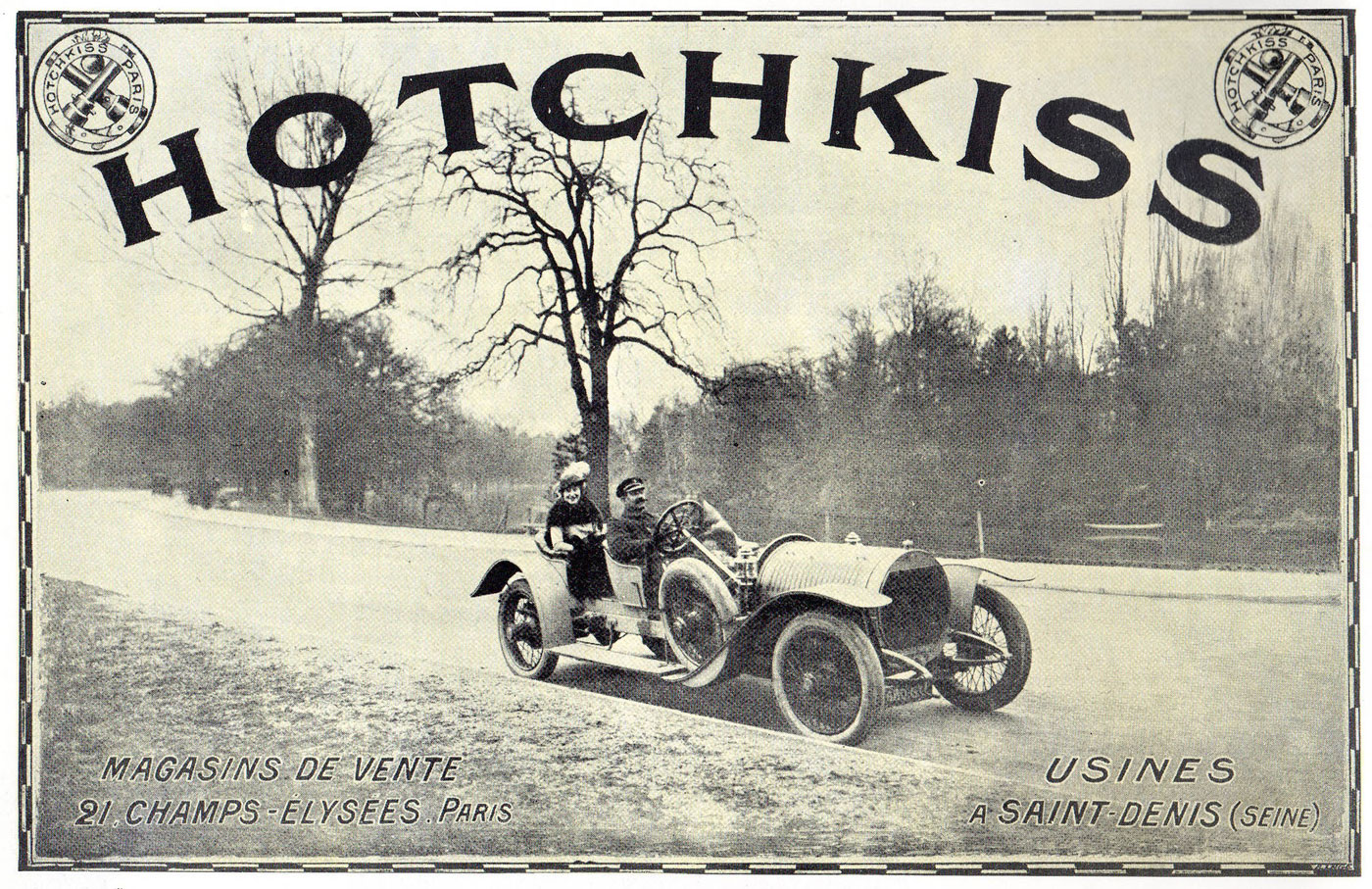
Early Hotchkiss cars were readily identifiable by the cannon barrel shaped hood. Note the badges with cannons at the top of this photo from 1910.
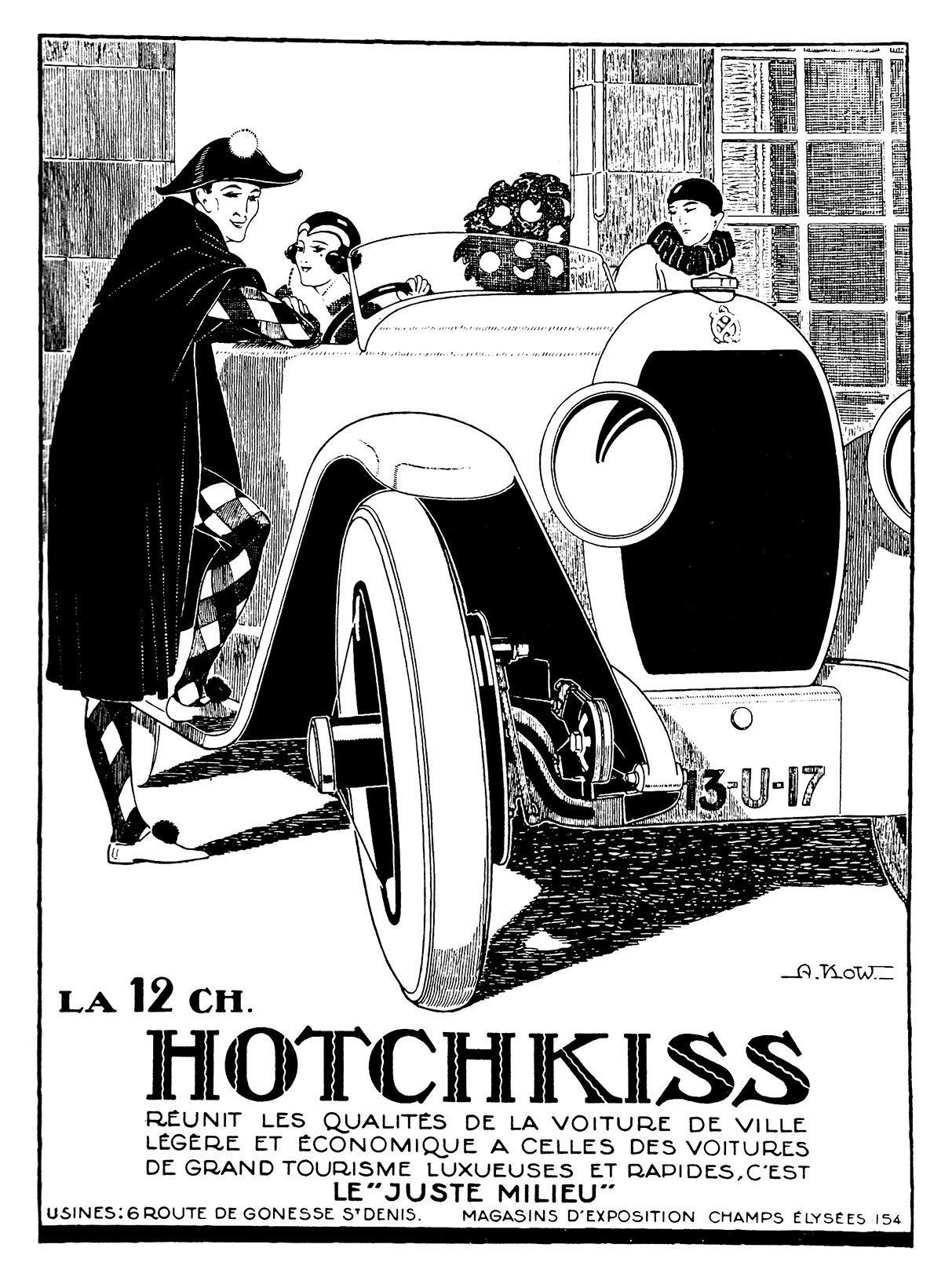
Alex Kow was just as effective in black and white as he was with color. This ad from 1929 boosts the car “Unites the qualities of a light and economical town car with those of a luxurious, fast ‘Grand Tourisme’ – -it is the ‘Happy Medium’. But the artwork said so much more. Copyright the Estate of Alex Kow
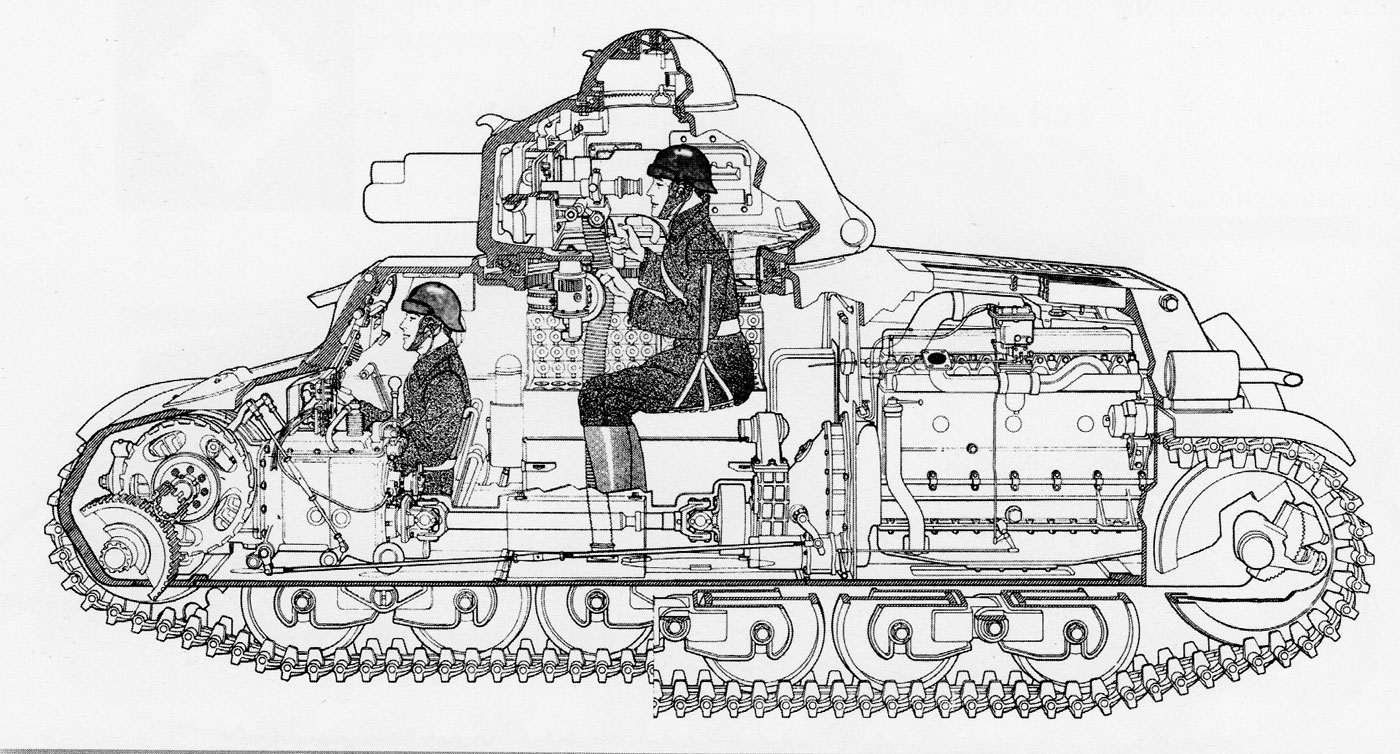
Between the wars, Hotchkiss continued to improve their light tank, and despite complaints, kept filling orders for the French Army. Not often are we treated to a cutaway of a tank in an automotive publication, but tanks and artillery were the bread and butter for Hotchkiss.
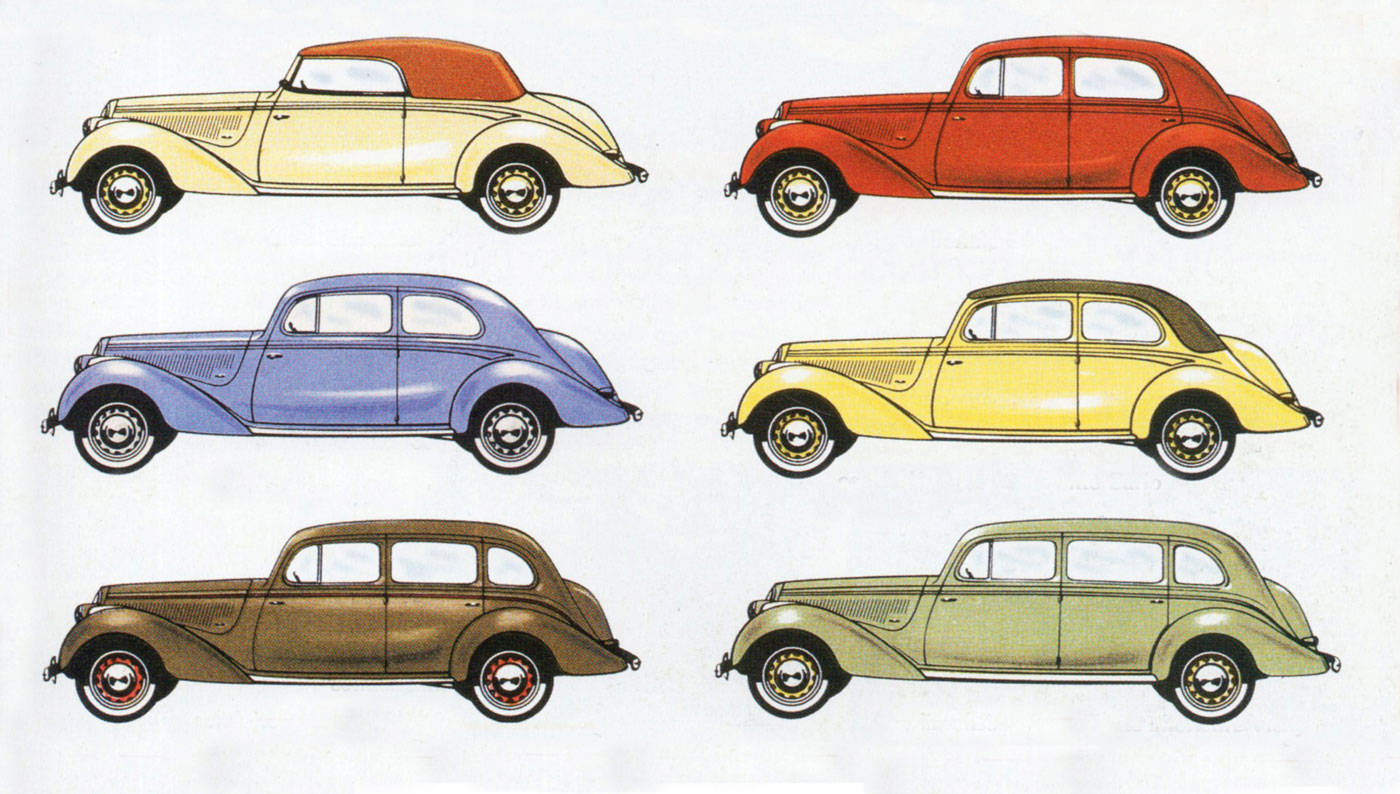
Alex Kow ad represents the ho-hum line up of Hotchkiss cars dating from 1939: The Biarritz Cabriolet, Cabourg Saloon, Cote de’Azure ‘coach’ (blue), Monte Carlo roll top, and the Vichy and Chantilly. Engines were four and six cylinder OHC ranging from 2300 cc to 3500cc. All right hand drive, btw. Copyright the Estate of Alex Kow
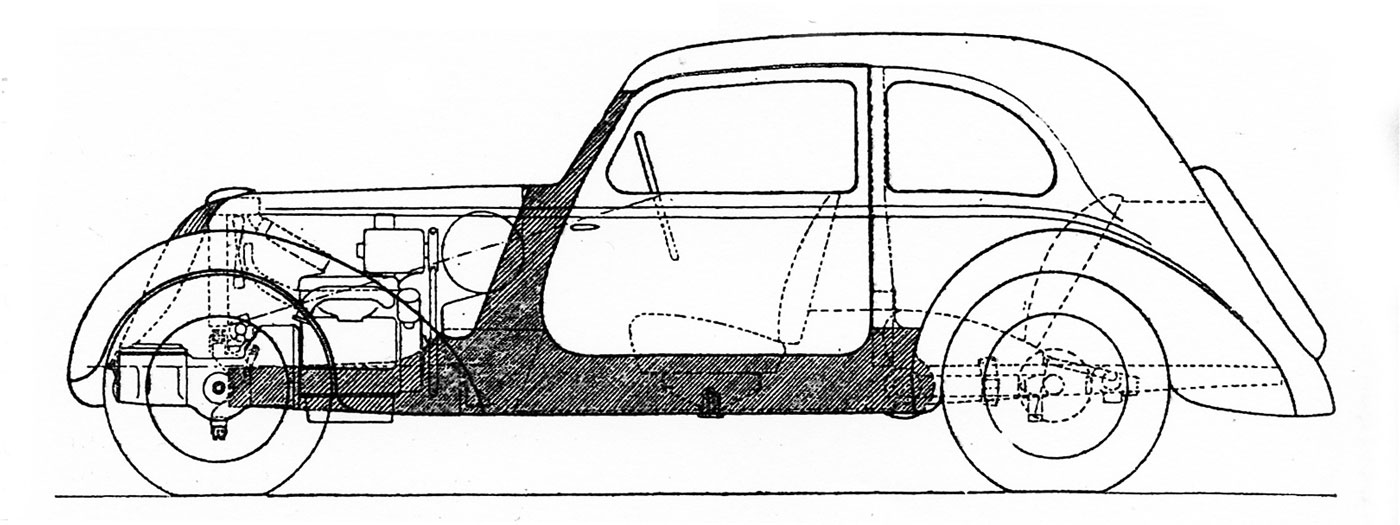
And then along came Jean-Albert, brilliant and obstinate, obsessed with his idea for a front wheel drive package based on an aluminum subframe. This was the Amilcar Compound, a Hotchkiss project with Grégoire at the head. Beare devotes a chapter and then some to the work of this polymath, who was involved with Hotchkiss for many years.
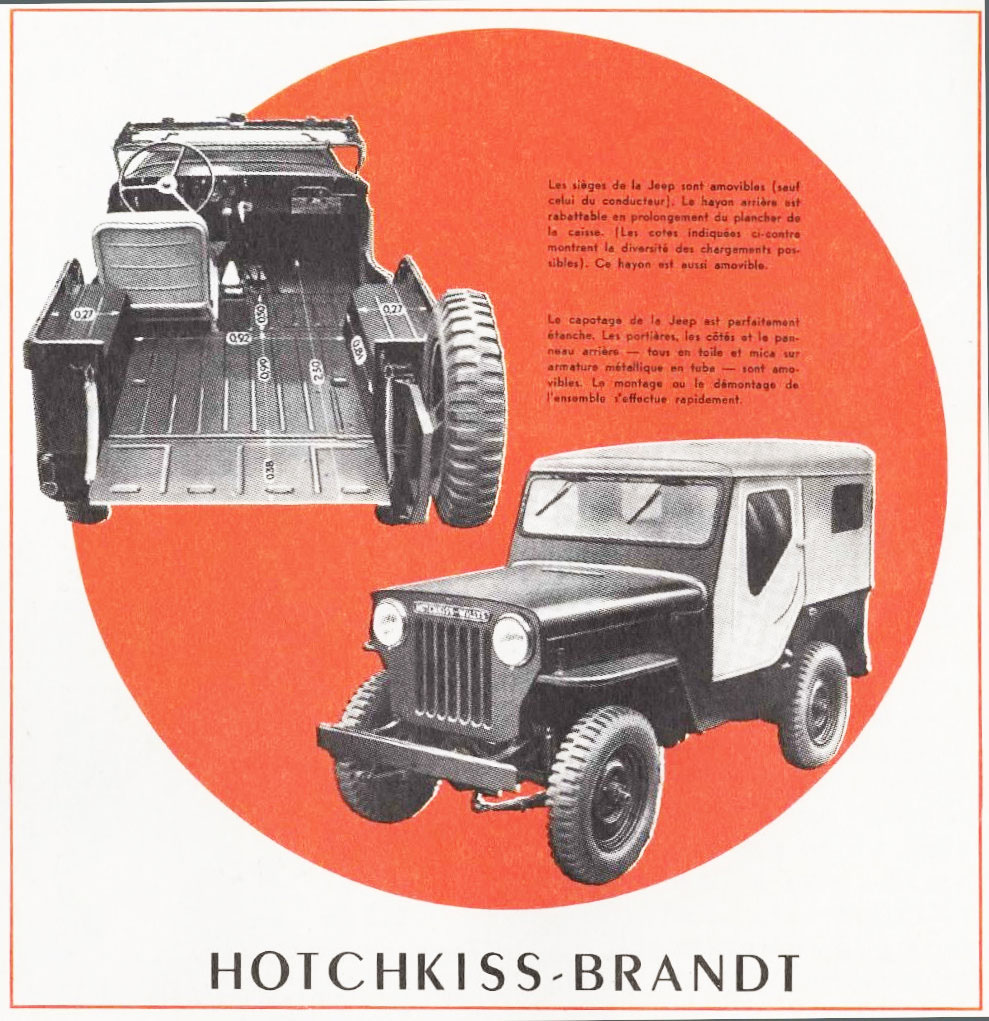
After WWII Hotchkiss did a rousing business maintaining and repairing Jeeps. Eventually they created a business to make the Hotchkiss-Brandt Jeep, producing thousands between 1961 and 1966.
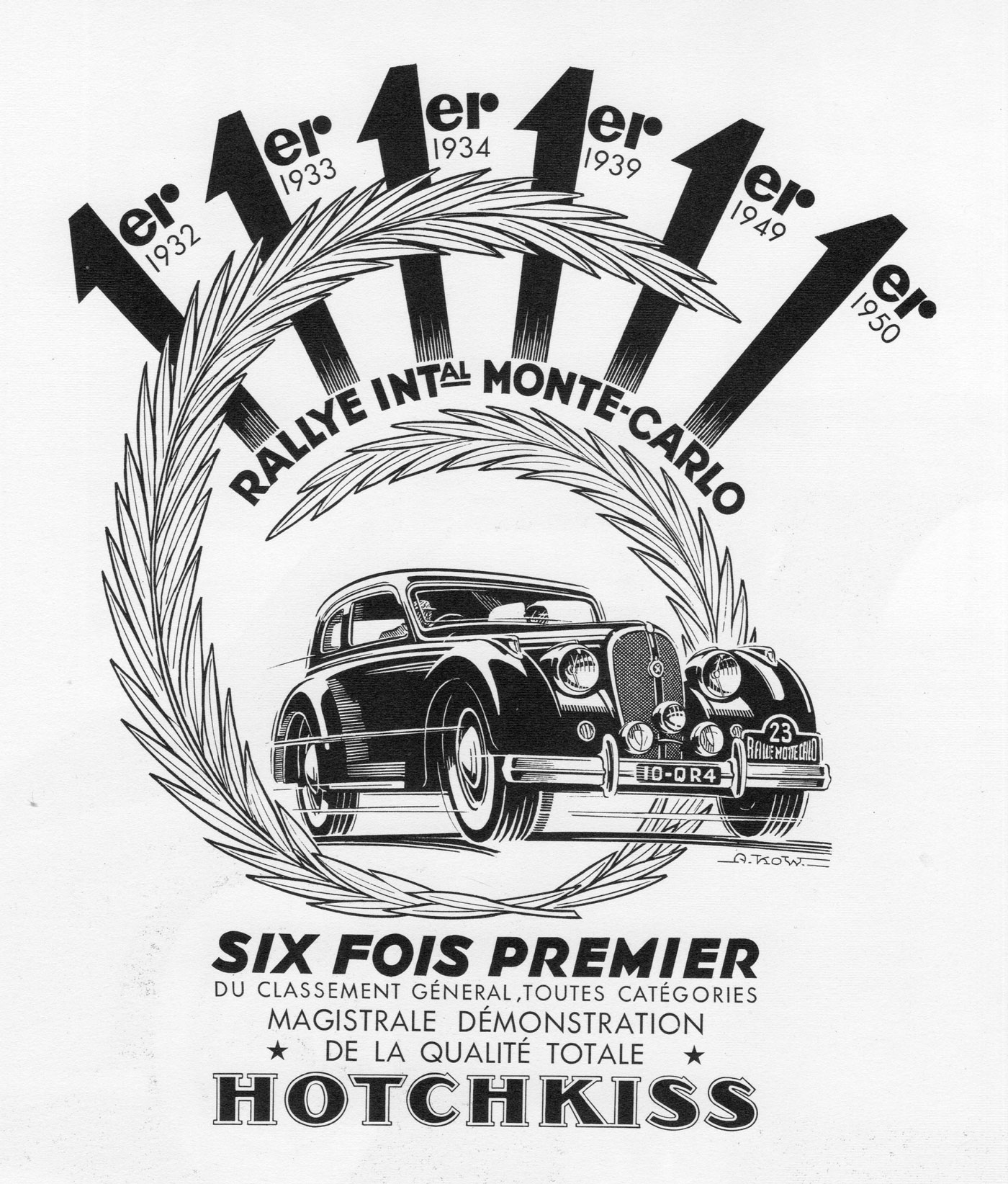
Perhaps Hotchkiss missed a great PR opportunity here. Even though Alex Kow created new ads like this every time Hotchkiss won the Monte, the word did not seem to get around, much less be made legendary. Copyright the Estate of Alex Kow
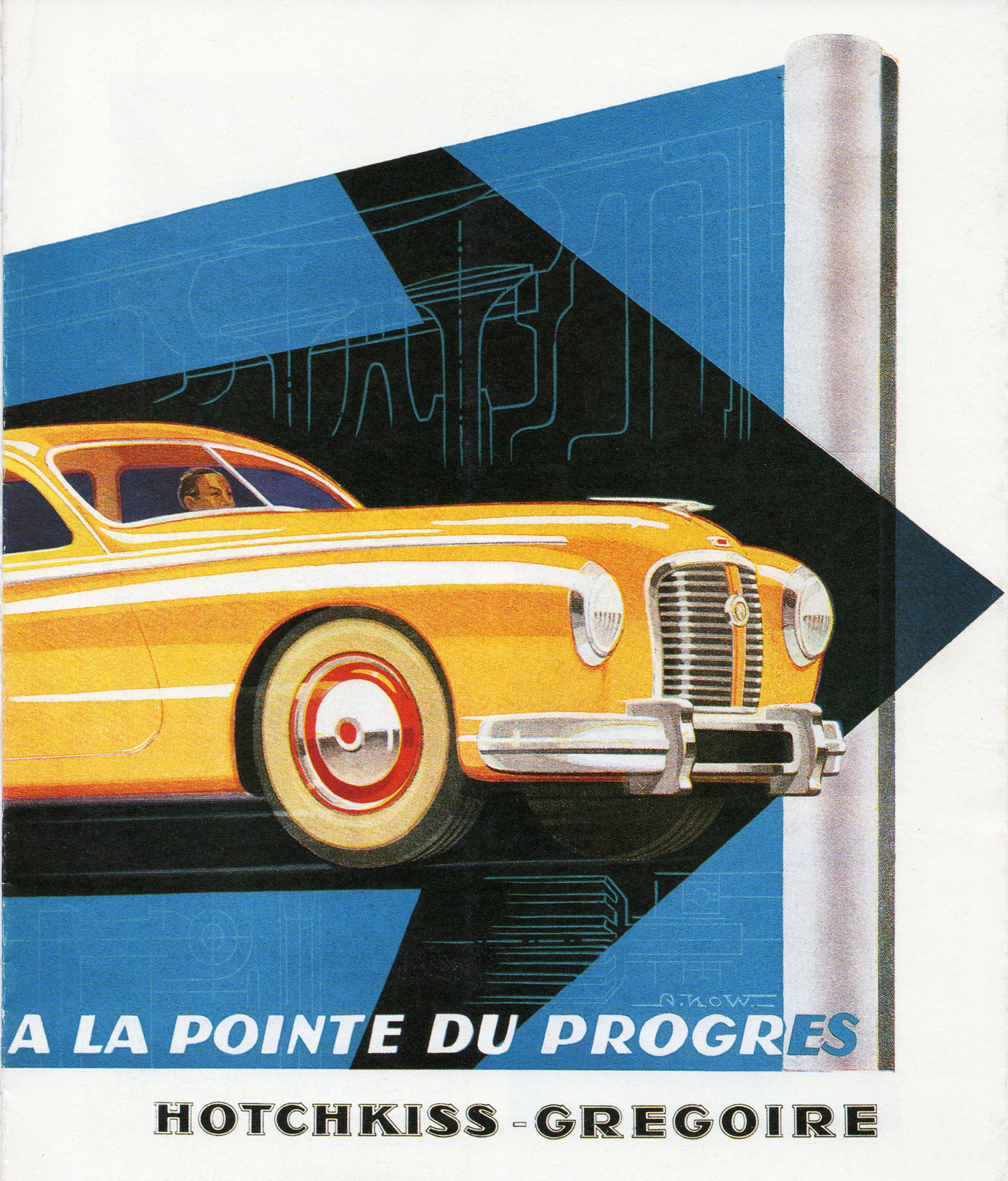
The bright and colorful hope of the future lay with the Hotchkiss-Grégoire, but the flat-four front-drive aluminum-chassied creation came to naught. Copyright the Estate of Alex Kow
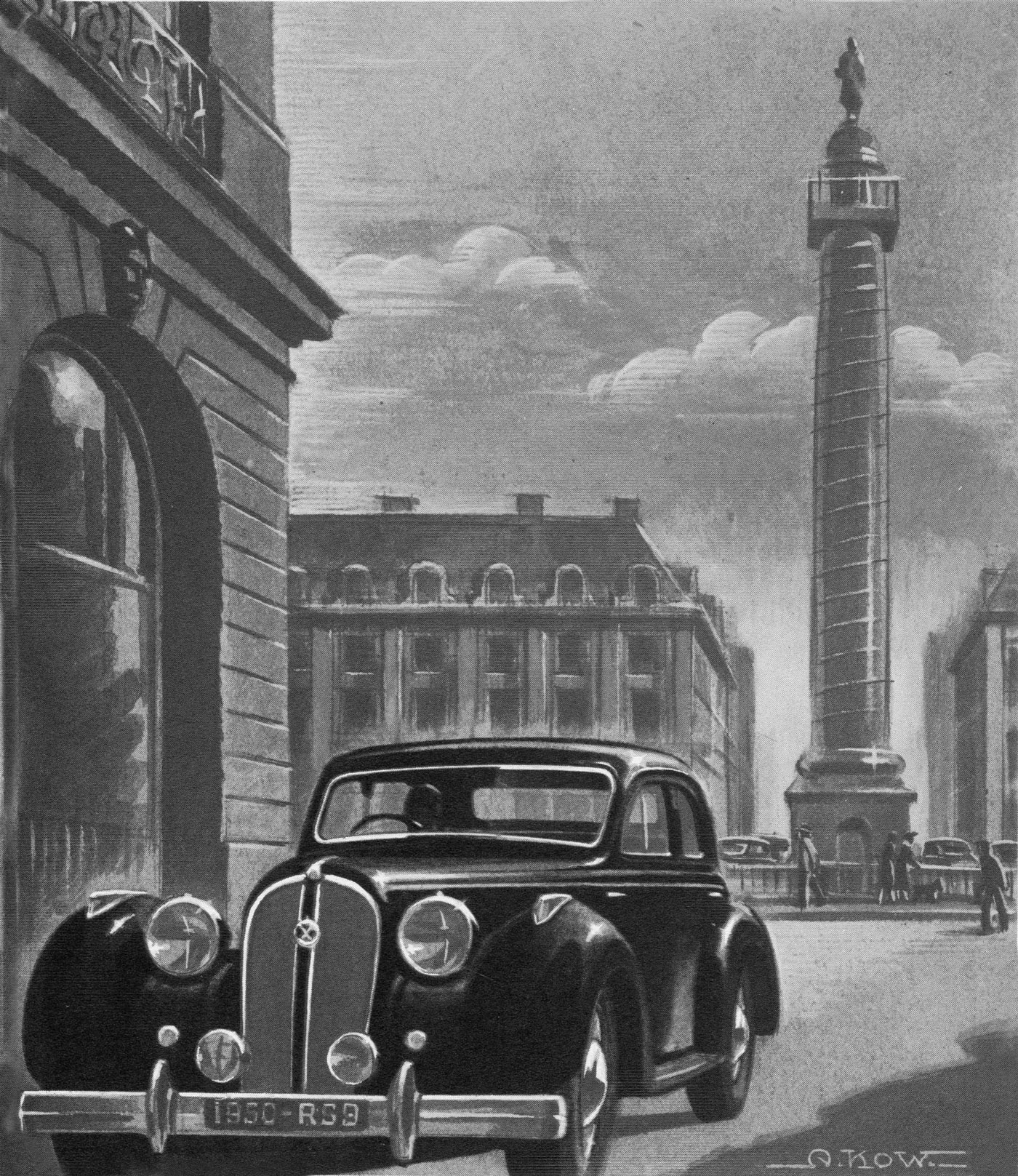
In the opposite mood, Kow depicted this 1950 model of the standard and Hotchkiss darkly. Did he know something? Copyright the Estate of Alex Kow
Books By David Beare Reviewed by VeloceToday
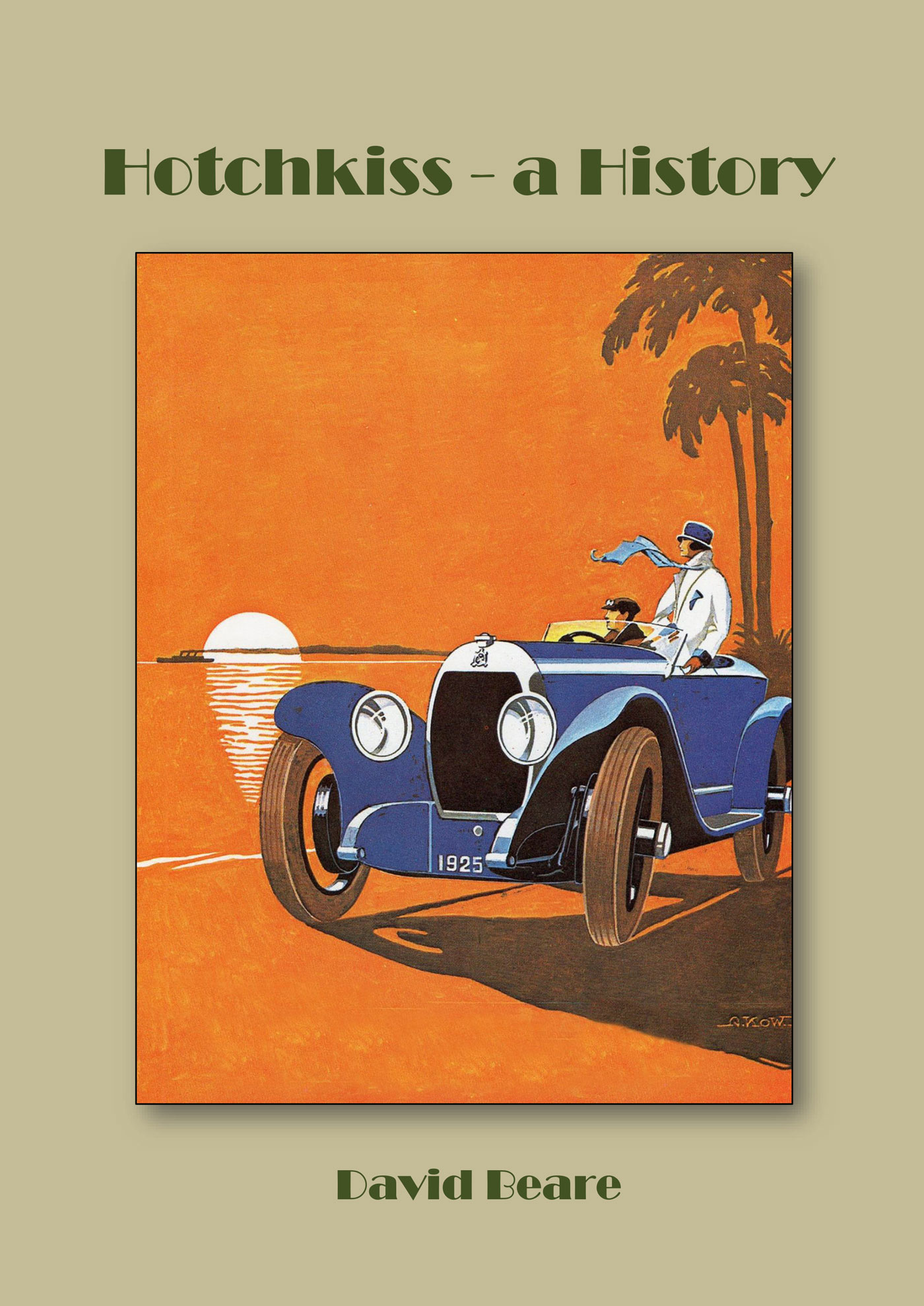
Sir,
I have had a Hotchkiss the big Six cylinder…plus a very good collection of the
history of the Hotchkiss family here in America. I was a former member of the
Hotchkiss Club in France. A very interesting club and the Hotchkiss car, in my
opinion was a much better car that say….the Delahaye/Delage…possible the Talbot, but not in the same gendre . I know of only approximately three to five Hotchkiss in the US.
Fantastic car….